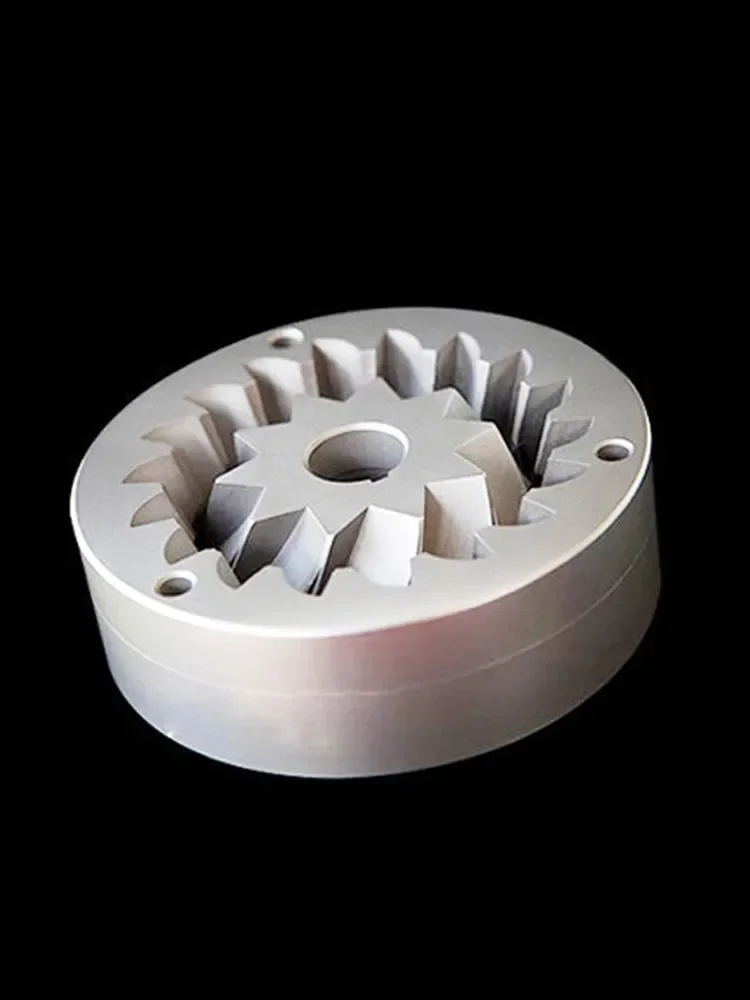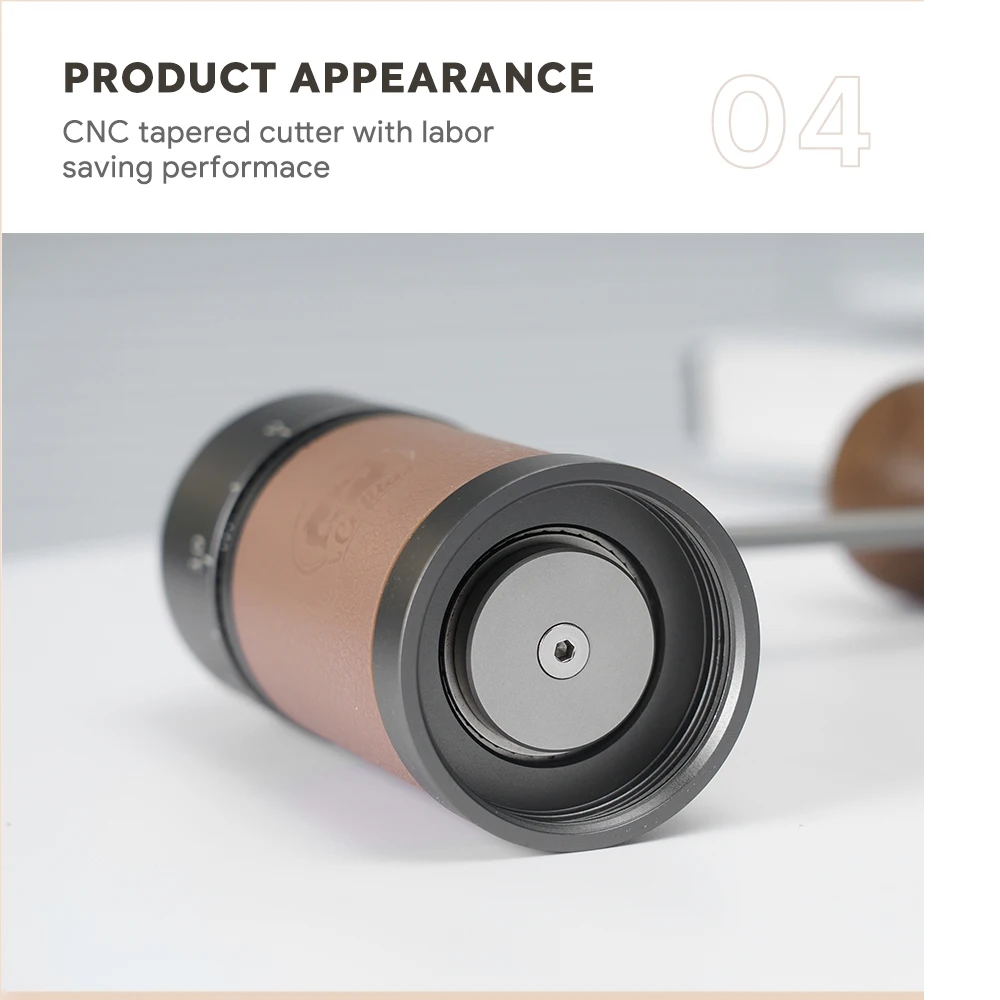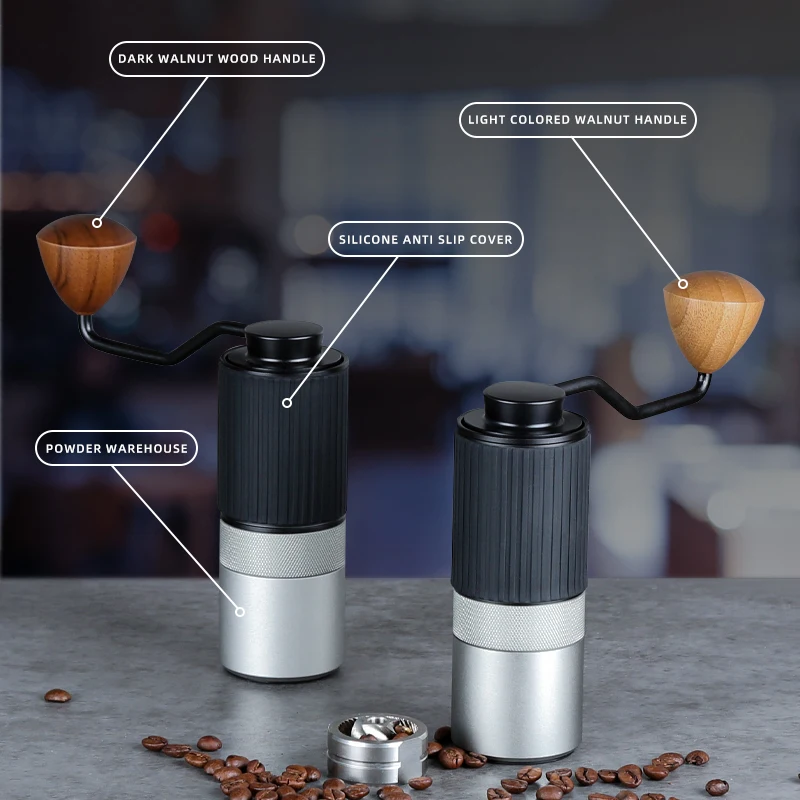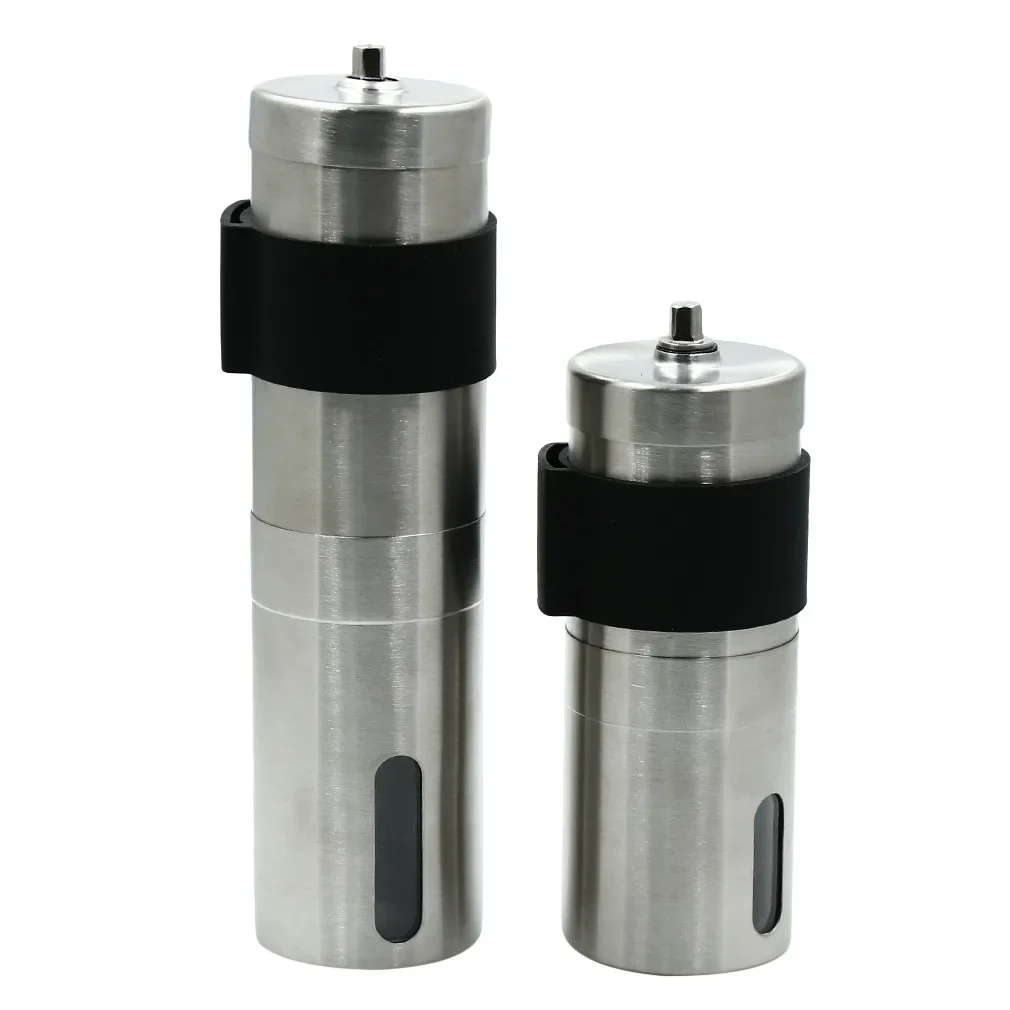The Connection Between Manual Grinding Heat and Coffee Flavor
Every coffee enthusiast knows that grinding is a critical step in coffee preparation. The way you grind your beans dramatically influences the flavors that end up in your cup. Among the many factors that affect grinding quality, heat generation is often overlooked but surprisingly impactful.
When you manually grind coffee beans, the friction between the burrs and the beans creates heat. This heat isn’t just a byproduct of the grinding process—it actively interacts with the delicate compounds that give coffee its distinctive flavors and aromas. While manual grinders generally produce less heat than their electric counterparts, they aren’t immune to this phenomenon.
The heat generated during grinding can:
- Accelerate the release of volatile compounds before brewing even begins
- Alter the structure of essential oils that carry flavor
- Trigger premature oxidation of freshly ground coffee
- Change the extraction characteristics during brewing
Throughout this article, we’ll explore the science behind heat generation in manual grinders, how it affects coffee’s chemical makeup, and most importantly, what you can do to minimize its impact on your daily brew. Understanding how grind settings and heat impact espresso quality is particularly crucial for those seeking perfect extractions.
The Science of Heat Generation in Manual Coffee Grinders
The mechanics of heat production in manual grinders begins with simple physics: friction creates heat. When you turn the handle of your manual grinder, you’re applying force that causes the burrs to rotate against each other with coffee beans caught in between. This mechanical interaction converts some of your kinetic energy into thermal energy.
Burr Materials and Heat Transfer
Different materials respond distinctly to friction and heat:
- Ceramic burrs: Generally have lower thermal conductivity, meaning they absorb and transfer less heat to the coffee. They warm up more slowly but also dissipate heat more slowly once hot.
- Steel burrs: Higher thermal conductivity means they can heat up quickly but also shed heat faster when grinding stops. This property makes them potentially more responsive to cooling between batches.
Grinder Construction Factors
The overall design of your grinder significantly influences heat generation:
- Bearing quality: Higher-quality bearings reduce unwanted friction in the mechanism itself
- Burr alignment: Properly aligned burrs create consistent friction rather than hot spots
- Stability: Less wobble means more efficient grinding with less excess friction
Grinding Technique’s Impact
How you physically operate your manual grinder matters tremendously:
- Speed: Rapid cranking significantly increases friction and heat
- Pressure: Excessive downward force while grinding creates more resistance and heat
- Rhythm: Uneven, jerky motions tend to create more friction than smooth, consistent turning
When comparing heat generation in manual versus electric grinding methods, manual grinders typically produce less heat overall. However, your technique remains the single most controllable factor in minimizing heat production.
How Heat Affects Coffee’s Chemical Compounds
Coffee beans contain hundreds of chemical compounds that contribute to flavor and aroma. Many of these compounds are remarkably sensitive to temperature changes, which explains why heat during grinding can noticeably alter your coffee experience.
Volatile Aromatic Compounds (VOCs)
These delicate molecules give coffee much of its character:
- 2-furfurylthiol: Responsible for classic roasty notes, highly susceptible to heat-accelerated evaporation
- 3-mercapto-3-methylbutyl formate: Creates fruity characteristics that diminish rapidly when exposed to heat
- Pyrazines: Contribute nutty, earthy tones that can become unbalanced with heat exposure
When grinding generates heat, these compounds begin evaporating or transforming before you’ve even had a chance to brew your coffee. The result is a less aromatic, less complex cup.
Coffee Oils and Lipids
Heat affects the oils in coffee in several ways:
- Accelerates rancidity through increased oxidation
- Changes the molecular structure of certain oils
- Causes premature release of lipids that would ideally remain protected until brewing
These changes fundamentally alter how flavors extract during brewing. The pivotal role coffee grinder type plays in flavor becomes evident when comparing coffee ground at different temperature levels.
Oxidation Processes
Heat dramatically speeds up oxidation reactions:
- Oxygen molecules interact more aggressively with compounds at higher temperatures
- Antioxidants naturally present in coffee deplete faster
- Off-flavors develop more quickly, sometimes even before brewing begins
This chemistry explains why heat-affected coffee often tastes noticeably different from coffee ground with minimal thermal impact.
Identifying Heat-Related Flavor Changes in Your Cup
Recognizing when heat has affected your coffee helps you identify when adjustments to your grinding technique are necessary. Here’s how heat-affected coffee typically presents in the cup compared to properly ground coffee:
| Flavor Characteristic | Properly Ground Coffee | Heat-Affected Coffee |
|---|---|---|
| Aromatics | Vibrant, multi-layered | Subdued, fewer distinct notes |
| Sweetness | Pronounced, clear | Muted, less defined |
| Acidity | Bright, crisp | Flat, diminished |
| Body | Balanced, silky | Often thin or alternatively harsh |
| Finish | Clean, lingering | Short, sometimes ashy |
| Overall complexity | Nuanced, dimensional | Simplified, one-dimensional |
The most common indicators of heat-affected brewing include:
- A noticeable lack of the fruity or floral top notes that should be present
- Increased bitterness without corresponding sweetness
- A general “flatness” or lack of vibrancy in flavor
- Astringency or unusual dryness in the finish
- Coffee that tastes oddly “generic” despite being specialty-grade beans
Key Factors That Increase Heat During Manual Grinding
Understanding what contributes to excess heat helps you make adjustments to preserve flavor:
Grinding Speed and Technique
Fast, aggressive grinding creates significantly more friction and heat. The harder and faster you crank, the more thermal energy transfers to your coffee grounds. Maintaining a steady, moderate pace produces better results than rapid cranking.
Grind Size Setting
Finer grinds require more force and create more friction between burrs. Espresso grinds generate noticeably more heat than coarse grinds for French press. This is particularly important when determining the ultimate espresso grind size for your equipment.
Bean Characteristics
Dense beans, dark roasts, and beans with low moisture content can all contribute to increased friction. Particularly hard beans require more force to grind, generating additional heat.
Environmental Factors
Grinding in an already warm environment provides a higher temperature baseline. Starting your grinding process in a cooler environment gives you more thermal “headroom” before heat becomes problematic.
Maintenance Status
Buildup of coffee oils and particles in your grinder increases friction between moving parts. Regular cleaning reduces unnecessary heat generation.
Batch Size
Grinding larger amounts of coffee at once creates more cumulative heat through sustained friction. The coffee grounds at the end of a large batch will be noticeably warmer than those at the beginning.

Practical Strategies for Heat-Minimized Grinding
Maintaining optimal flavor doesn’t have to be complicated. These practical approaches can significantly reduce heat generation:
Adopt a Slower Grinding Technique
Maintain a steady, moderate pace rather than aggressive cranking. Consistent, smooth turning motions generate less heat than erratic, forceful ones.Implement Interval Grinding
For larger batches, grind in smaller portions with cooling breaks in between. This prevents cumulative heat buildup and gives your grinder time to return to ambient temperature.Establish a Regular Maintenance Routine
Clean your grinder thoroughly at least monthly or after every 1-2 pounds of coffee. Proper cleaning prevents excess heat and preserves flavor by reducing friction from buildup.Consider Environmental Factors
Grind in the coolest area of your kitchen, away from ovens, direct sunlight, or other heat sources. Morning grinding typically occurs in cooler ambient temperatures.Optimize Bean Preparation
Store beans properly at room temperature and avoid grinding directly after roasting. Freshly roasted beans retain more heat from the roasting process.Reduce Batch Sizes
Grinding only what you need for each brewing session minimizes heat accumulation and ensures maximum freshness.Apply Minimal Downward Pressure
Let the weight of the grinder and gravity do most of the work rather than pushing down excessively while grinding.
Fine Adjustment Hand Grinder, Precision Manual Grinder, Travel Coffee Grinder
Price range: $185.11 through $494.63 Select options This product has multiple variants. The options may be chosen on the product pageHand Burr Grinder, Hand Crank Coffee Grinder, Manual Espresso Grinder, Portable Coffee Grinder
Price range: $262.72 through $300.22 Select options This product has multiple variants. The options may be chosen on the product pageManual Burr Mill, Manual Coffee Grinder Stainless Steel, Manual Coffee Mill Grinder, Mechanical Coffee Grinder
Price range: $127.26 through $130.32 Select options This product has multiple variants. The options may be chosen on the product pageHand Burr Grinder, Manual Coffee Grinder Stainless Steel, Precision Manual Grinder
Price range: $183.64 through $187.52 Select options This product has multiple variants. The options may be chosen on the product page
Measuring Grinder Heat: DIY Methods for Coffee Enthusiasts
You don’t need laboratory equipment to assess heat generation in your grinding process. Try these simple methods:
Temperature Change Method
- Measure the temperature of your beans before grinding using an infrared thermometer
- Grind as you normally would
- Immediately measure the temperature of the grounds
- A difference of more than 10-15°F (5-8°C) indicates significant heat generation
Touch Test Method
While less precise, you can feel the grinder body before and after grinding. If it feels noticeably warmer, especially around the burrs, excess heat is being generated.
Warning signs that your grinder is overheating include:
- Grounds that feel warm to the touch immediately after grinding
- A noticeably hot grinder body after operation
- Unusual burning or toasty smells during grinding
- Coffee that tastes progressively more bitter as you grind larger batches
Understanding the signs and consequences of grinder overheating helps you take corrective action before flavor is compromised.
The Impact of Burr Materials on Heat Generation and Flavor
The material of your grinder’s burrs significantly influences heat dynamics and subsequently affects flavor. Here’s how different materials compare:
| Characteristic | Ceramic Burrs | Steel Burrs |
|---|---|---|
| Heat Conductivity | Lower – absorbs less heat | Higher – conducts heat more readily |
| Heat Retention | Retains heat longer | Dissipates heat more quickly |
| Initial Heat Transfer | Slower to heat up | Heats up more rapidly |
| Grinding Speed | Generally slower | Typically faster |
| Durability | More brittle, sensitive to drops | More durable and resilient |
| Flavor Impact | Often preserves brighter notes | Can enhance body and richness |
Ceramic burrs generally start with an advantage for heat-sensitive coffees because they absorb less heat initially. However, they also cool down more slowly between batches. Steel burrs, while quicker to warm up, also dissipate heat faster when given the chance to cool.
The detailed comparison of heat properties in different burr materials reveals that material choice should match your specific grinding habits and coffee preferences.

Are Premium Manual Grinders Worth It? The Heat Perspective
When considering the investment in a higher-end manual grinder, heat management features provide a compelling justification:
Heat-Minimizing Features in Premium Grinders
- Precision-machined burrs with tighter tolerances create less excess friction
- Higher-quality bearings reduce mechanical resistance
- Superior alignment minimizes irregular contact points
- Better materials dissipate heat more efficiently
Long-Term Value Considerations
- Enhanced flavor preservation makes each bag of beans taste noticeably better
- Consistent performance maintains quality over time
- Reduced heat stress on components extends grinder lifespan
- Better results may reduce the temptation to upgrade again soon
For discerning coffee lovers, precision manual grinders designed to minimize heat generation offer value that extends beyond mere convenience. They fundamentally improve what ends up in your cup.
Heat vs. Other Factors: Contextualizing the Impact on Your Brew
While understanding heat’s impact is important, it should be viewed within the broader context of coffee preparation:
Relative Impact by Brewing Method
- Espresso: Extremely sensitive to grinder heat due to fine grind and pressure extraction
- Pour-over: Moderately affected, particularly with lighter roasts
- French press: Less affected due to coarser grinds and longer extraction
- Cold brew: Minimally affected due to very coarse grind and cold extraction
When Heat Matters Most
Heat becomes critically important when working with:
– Light-roasted specialty coffees with delicate flavor notes
– Single-origin beans selected for their unique characteristics
– Espresso preparation, where extraction amplifies any flaws
– Competitions or cupping sessions where subtle differences matter
For everyday brewing, manual coffee grinders for espresso with good heat management may show the most noticeable quality improvements.
When to Be Most Concerned About Manual Grinder Heat
Q: Does heat matter for darker roasts?
A: Less so. Darker roasts have already undergone significant heat exposure, making them less sensitive to grinding heat.
Q: Is heat more problematic for espresso grinding?
A: Yes. The fine grind required for espresso creates more friction, and the high-pressure brewing method amplifies any heat-related flavor changes.
Q: Should I worry about heat when grinding for cold brew?
A: Minimally. The coarse grind generates less heat, and cold extraction is less affected by heat-related changes.
Q: Are light roasts more susceptible to heat damage?
A: Definitely. Their delicate, complex flavor compounds are more easily altered by heat exposure.
Q: Does grinding speed affect heat more than grind size?
A: Generally, both matter significantly, but aggressive speed increases heat regardless of grind size.
Ceramic burr grinders that help manage heat during grinding are particularly valuable when working with heat-sensitive coffees.

Beyond Heat: Complementary Techniques for Preserving Coffee Flavor
Heat management works best when combined with other flavor preservation practices:
Bean Storage Optimization
Store coffee in airtight containers away from light, heat, and moisture. Coffee absorbs odors easily, so keep it away from strong-smelling foods.
Timing Matters
Grind immediately before brewing whenever possible. Once ground, coffee begins losing flavor compounds within minutes, regardless of heat exposure.
Water Quality Considerations
Use filtered water with appropriate mineral content. Heat-affected grounds extract differently, and poor water quality can compound these issues.
Brewing Parameter Adjustments
If grinding heat is unavoidable, consider slightly coarsening your grind and extending brew time to compensate for altered extraction characteristics.
The comprehensive approach to excellent coffee starts with selecting quality manual coffee burr grinders but extends throughout your entire brewing process. Heat is just one factor—albeit an important one—in the complex dance of variables that create your perfect cup.
At Savor Suite, we understand that the journey to exceptional coffee involves both knowledge and equipment. Our selection of hand burr grinders is curated specifically with heat management capabilities in mind, ensuring that the subtle flavors you seek make it all the way from bean to cup.







